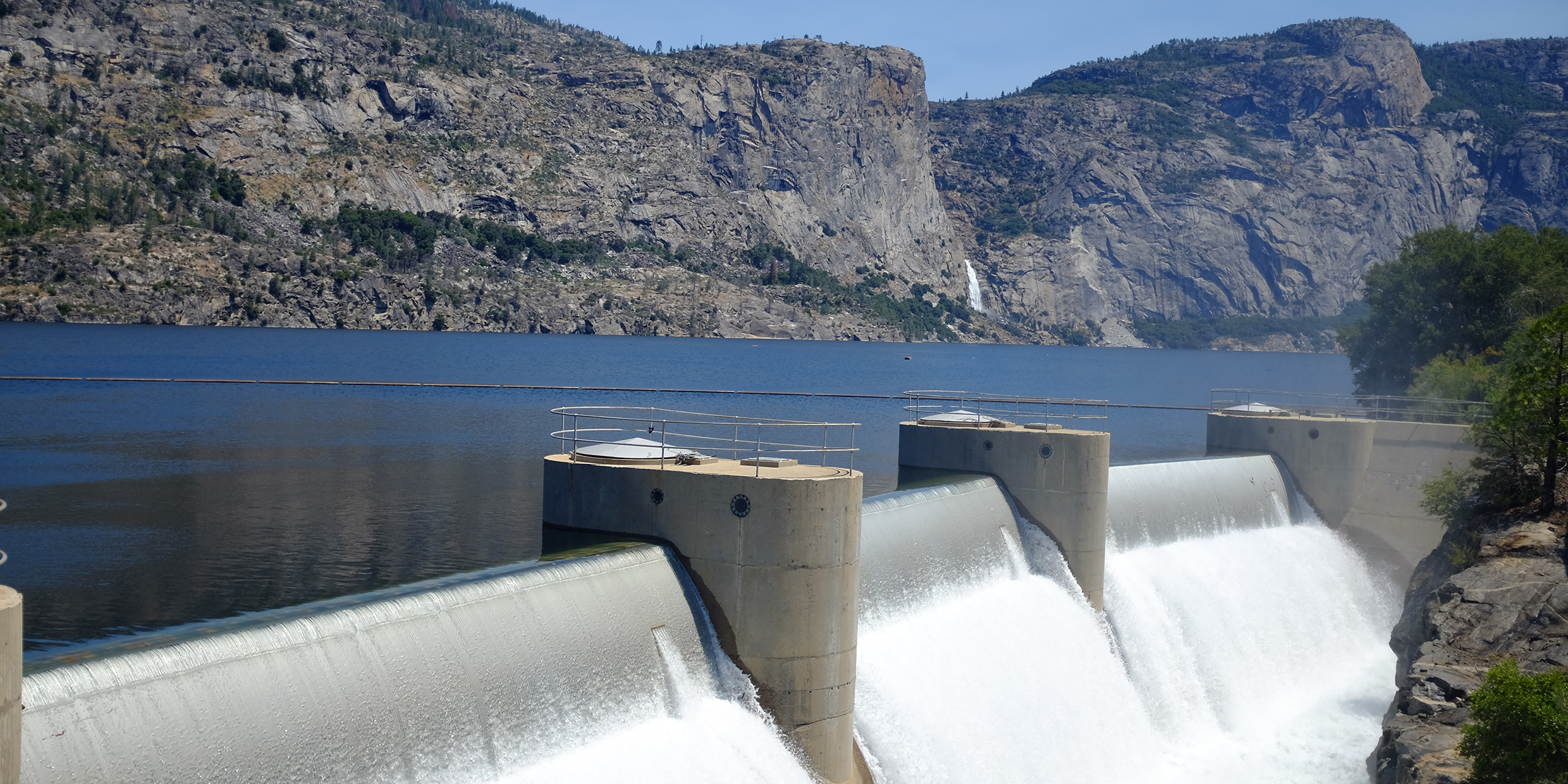Originally published 11 March 1991
In the last years of the 19th century, the thirsty citizens of San Francisco covetously turned their eyes on the Hetch Hetchy Valley of the Tuolumne River in Yosemite National Park. A dam across the valley, a 150-mile-long aqueduct, and the city’s water supply problems would be solved forever.
The naturalist John Muir, who had worked hard to preserve the wild rivers of Yosemite for the nation, was aghast.
“Dam Hetch Hetchy!” he cried, unbelievingly. “As well [we should] dam for water tanks the people’s cathedrals and churches, for no holier temple has ever been consecrated by the heart of man.”
The valley was dammed, the aqueduct built. But the solution wasn’t forever.
Today, San Francisco is again thirsty for water. In fact, the entire state of California is thirsty. Dozens of dams and hundreds of miles of aqueducts haven’t kept up with the state’s exploding, water-guzzling population. A five-year drought has made things worse. Damming more wild valleys won’t solve the problem. Hardly a drop of rain falls upon the state that isn’t presently channeled for human use.
Of all the gifts of civilization, the endlessly gushing tap is the one we take most for granted. Now, for Californians, and perhaps for the rest of us, the tap is running dry.
De-mystification of water
The story of cheap, plentiful public water is part of the story of science. The story begins with the de-mystification of water during the Scientific Revolution of the 16th and 17th centuries. Priests and water diviners yielded their sway over water to physicians and engineers, and holy fonts and sacred springs gave way to laboratory flasks and beakers. When chemists demonstrated late in the 18th century that water is created when hydrogen is burned in oxygen, the sacred liquid became plain H2O.
Now, at least, folks knew what pure water was meant to be. The distinction between pure water and waste water became apparent. River communities began to take their drinking water from upstream of sewer outfalls, but no one yet worried about towns farther down the river.
During the 19th century, scientists demonstrated a connection between pure water and public health. Civic commissions began inspecting public water supplies and were startled to find (according to one government report) “leeches, small jumping animals that looked like shrimp, oily creams” and “fetid black deposits.” And that was only what met the eye. Undoubtedly, the water was also thick with microorganisms and chemical contaminants.
By the end of the century, filtration and chemical treatment were common, and outbreaks of typhoid fever and cholera became less frequent. It had taken 400 years to recognize that certain disease epidemics had more to do with the purity of public water supplies than with God’s wrath.
Boston was the first American town to establish a waterworks, in 1652, bringing water by gravity from springs outside the city (New York did not get around to a public water supply until 1799).
The Metropolitan Water District of Massachusetts, set up in 1895 to supply Boston and its suburbs, was the first regional water supply system in the United States. That was the heroic age of public water engineering, when vast systems of reservoirs and aqueducts were created to supply American cities, including the damming of Hetch Hetchy by San Francisco.
New megaprojects
The 1990s promise to be a second heroic age in the history of Boston’s public water. Huge projects are under way to improve the supply from the Quabbin and Wachusett reservoirs, by rehabilitating the Sudbury Aqueduct and excavating new tunnels, and to clean up the more than 500 million gallons of partially-treated waste water that pour daily into Boston Harbor.
But these megaprojects may fail to keep the tap flowing (and just watch those water rates climb). We have become a nation of water squanderers. In Southern California, a typical single-family house consumes 140 gallons of water per person per day. It’s asking a lot of nature, already much abused, to keep up with that sort of demand.
We take for granted our couple of showers a day, a shampoo with every shower. We flush out toilets after every use, no matter how minor. By letting the water run continuously at full force, some Americans use five gallons of water to brush their teeth. Every backyard has a swimming pool, or every backyard owner wants one. Lawns are lush and green, even in the desert. One wonders if by the end of the next century any river in America will be allowed to run unharnessed to the sea.
If it hadn’t been for cranky environmentalists like John Muir, even Yosemite Valley and the Grand Canyon might have been turned into giant reservoirs to slake the thirst of Americans. Once, when Muir was guiding President Taft around Yosemite, the president pointed to the majestic gateway to the valley and teasingly said, “Fine place for a dam.”
Muir’s eyes flashed fire. “The men who would dam that,” he said, “would be damning himself.”



